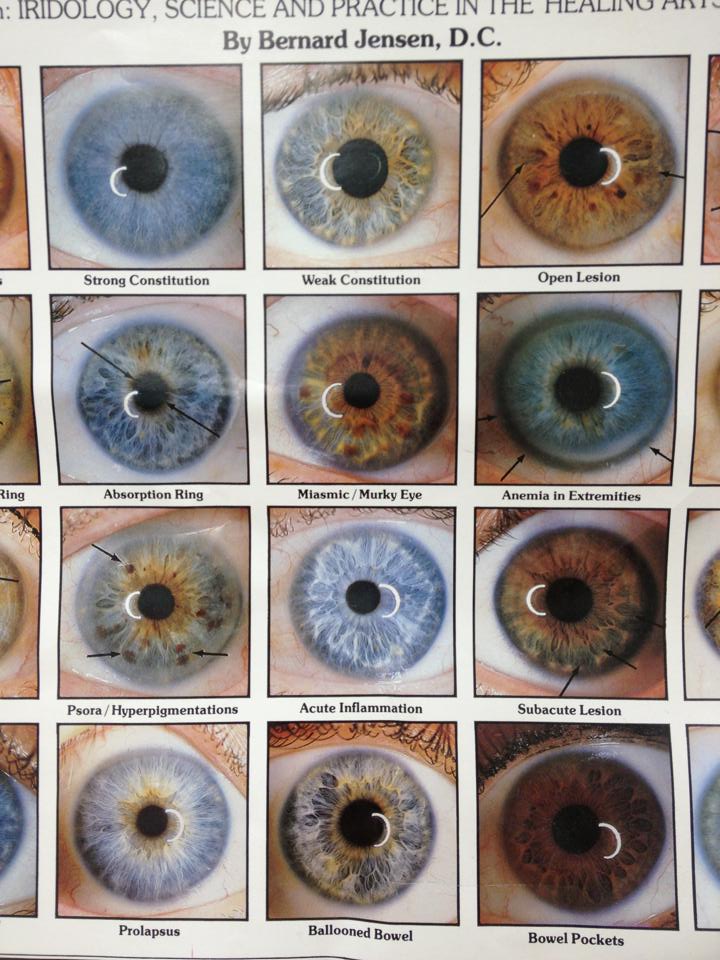What is iridology?
Click Here to learn about iridology.
Important notes regarding iris signs
In Dr. Morse’s clinical work, given his knowledge and experience in regards to the lymphatic system, he has come to realize that there are a few instances in which the way he sees the iris signs differs from how Dr. Jensen would see these same signs:
1.) Autonomic Nerve Wreath (3rd picture of the ‘Iris Signs’ chart below; 1st row, 2nd column).
In Dr. Morse’s experience, the autonomic nerve wreath does not exist. The wreath is not a representation of nerve integrity nor is it a reflection of the autonomic nervous system. In Dr. Morse’s view, this wreath reflects the intestines, and to be more specific, it represents the degree of malabsorption the individual is experiencing.
2.) Poor Nerve Supply (see 3rd picture of ‘Iris Signs’ chart below; 1st row, 3rd column).
See #1.
3.) Acute Inflammation (see 2nd picture of the ‘Iris Signs’ chart below; 3rd row, 2nd column).
What is referred to as acute inflammation in the picture, Dr. Morse describes as lymphatic congestion/stagnation.
Are blood tests not sufficient enough?
Conventionally, blood chemistry is heavily emphasized to help determine a person’s state of health. Blood tests are used to identify deficiencies (mineral content), disease, the effectiveness of a prescribed drug as well as to evaluate organ and gland functions.
But here’s the catch: a blood test only reflects what the blood has to say, which can be a highly inaccurate description of what is truly going on. For there is another system within the body that plays a vast role in the state of health of a person’s tissues, which is the lymphatic system. One of the very core focuses of Dr. Morse’s health programs is to make sure this system flows and works, as it should, at all times.
Through iridology, we can see the degree of lymphatic congestion as well as where the congestion has accumulated the most – and why this congestion isn’t being expelled from the body. This will paint a far clearer picture of why an organ or gland may not be functioning up to par.
Blood tests can provide certain relevant pointers and thus can be useful as a complimentary tool, but not as useful as to the extent that most would otherwise think.
I implore you to learn about, and familiarize yourself with, the practice of iridology.
Taking pictures of your eyes (w/ video tutorials)
There are two ways you can photograph your irides:
1.) Have pictures taken of your irides with the assistance of another person, or by use of a tripod.
2.) Have pictures of your irides taken with the professional help of an opthamologist or iridologist.
Iridologist and Raw Food Educator, Jennifer Thompson, has provided detailed instructions on her website for how you can take pictures of your eyes using a digital camera or an iPhone:
#1: Original Tutorial Video from the Clinic: Taking Iris Pictures with a Phone
#2: New Updated Tutorial Video from the Clinic: How to Take an Eye Photo with a Cell Phone
“If you can’t get [people’s] eyes to change, you’re not a good healer.” ~ Dr. Robert Morse, N.D.







